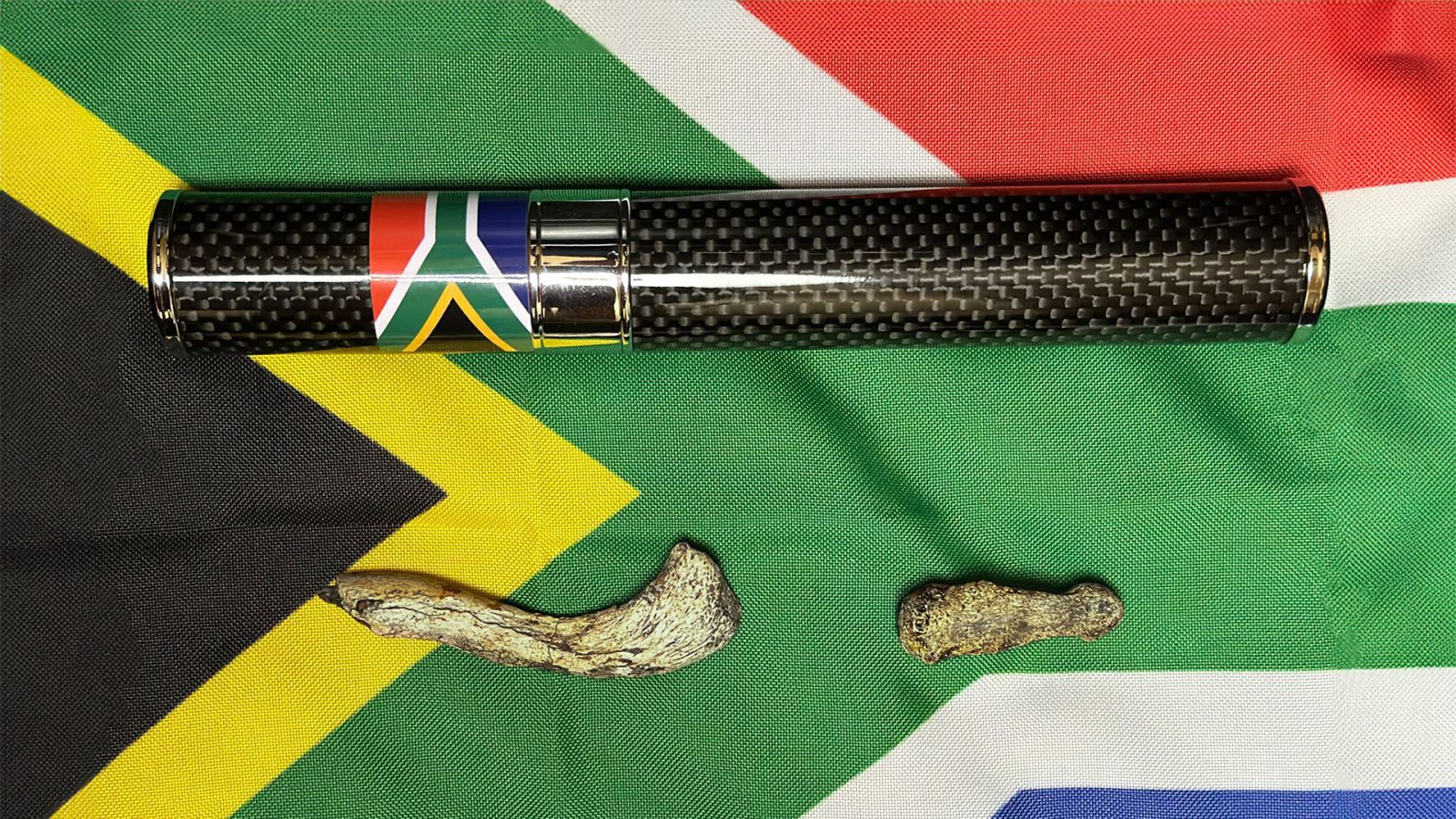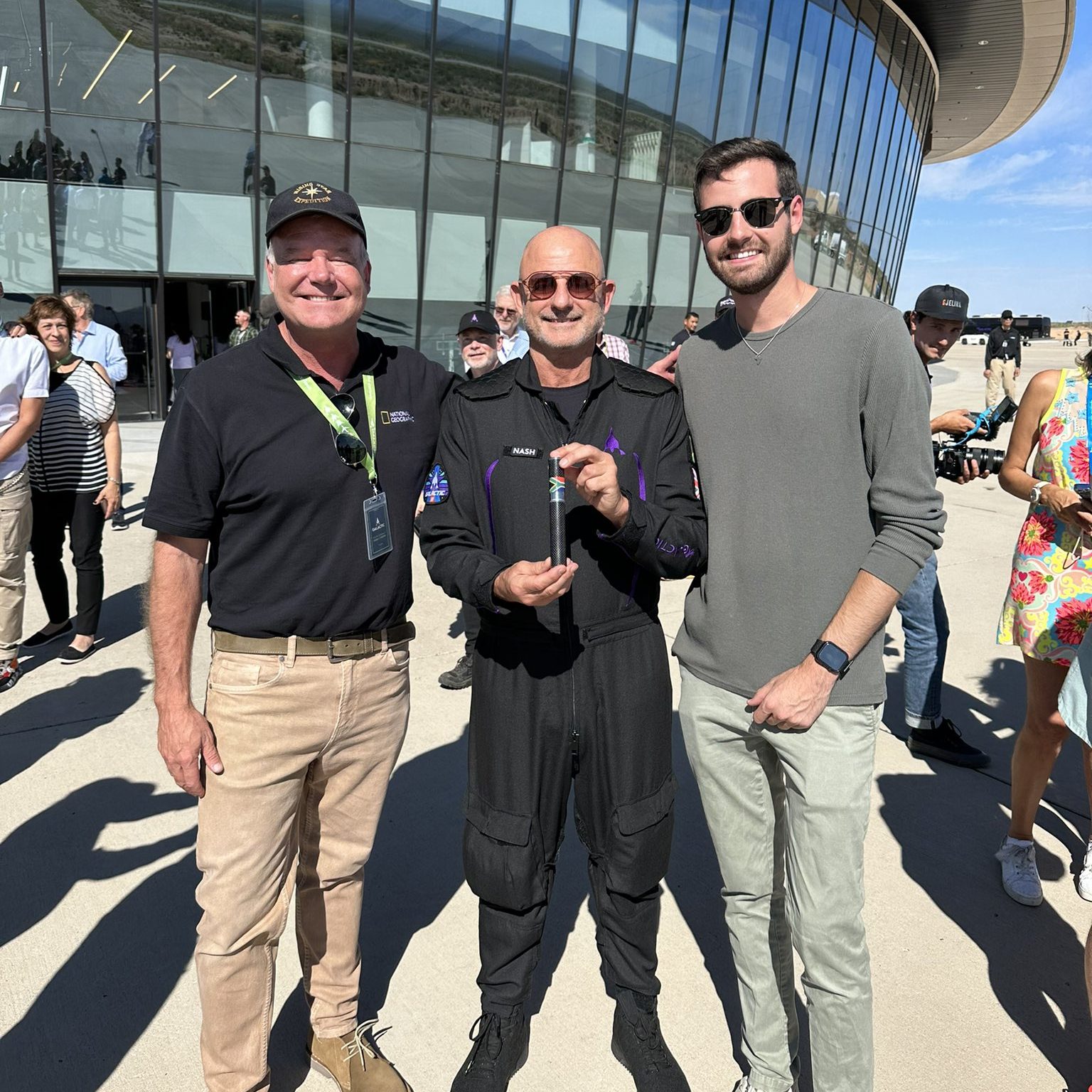
Virgin Galactic’s Galactic 03 mission was different from its previous missions in a number of ways. One of those additions was the carrying on of fossilized bones of ancient human ancestors by one of the participants. This act has raised some questions by scientist in the field.
Scientist call morality questions on fossil joy ride
Last week Friday, Virgin Galactic launch the Galactic 03 mission from Spaceport America in New Mexico. On board were three ticket holders, Virgin Galactic’s chief astronaut instructor, and two pilots. Joining one of the customers were two fossils of bones from ancient human ancestors from South Africa that were stored in a small tube.
Tim Nash was the customer carrying those fossils with him on his short flight up to the boundry of space. Nash is from South Africa and works with the National Geographic Society who supported his short acquisition of the fossils.
The fossils were borrowed from the University of Witwatersrand in Johannesburg, South Africa and exported out of the country by a professor named Lee Berger. Berger, in his application to the South African Heritage Resources Agency to obtain and export the fossils, he explicitly stated the purpose was mostly promotional and a way to promote South African heritage to the world. He also stated that he would be handing them off to Nash shortly before the flight.
South Africa approved of the use and export of the fossils.
However some scientist are concerned about the approval of this use of ancient and what seems like rather important fossils of our early ancestors. One of the bones, a collar bone from the species known as Australopithecus sediba, was dated to have existed two million years ago. Robyn Pickering, a geologist who helped age the bone told Scientific American, “to treat ancestral remains in such a callous, unethical way — to blast them into space just because you can — there’s no scientific merit in this.”
Join our Discord Server: Join the community with forums and chatrooms about space!
Apparently this isn’t just any bone, but the first bone of the species ever found and is the reference piece for A. sediba. However, Berger’s justification for choosing this important fossil was because it has been heavily scanned, documented, and casted – oh and because his son found it. Other scientist have found concern in that reasoning that just because a fossil has been scanned, it can be used in potentially reckless manners according to comments given to Scientific American.
The bones were packaged into a small tube for Nash to carry on the flight. Photos from before and after the flight show the fossils were not damaged during its journey too and from space. According to Berger’s application, some experiments may be conducted to see how radiation in the high atmosphere affected them but it was not a high priority.

Not the first time space has been sent weird stuff
Space is no stranger to being taken advantage of for publicity purposes. Pizza Hut delivered a pizza on a Russian Soyuz rocket, SpaceX has sent cars and cheese wheels to space, and numerous of other weird items. Humanity, both living and past, are a part of that history.
Before these fossils made its travels to and from space, companies have offered cremated remains rides to space as a form of a memorial for the loved one. Celestis is the most popular and has been conducting such missions since 1997. While it’s not everyone’s idea of resting in peace, it has kept a continuous list of families willing to pay the thousands of dollars for the service. The company has been performing several flights per year.
A little more controversial, remember the Beresheet lander from IsraelIL in 2019? This lander was suppose to make Israel the next country to land on the Moon and the first private company to do so as well. However, like many recent landers, it failed and crashed on the lunar surface. Shocking to many, it was shared after the crash that tardigrades, microscopic organisms that kinda look like bears, were on board and might have survived for a short amount of time on the Moon.
Similar to Berger and Nash’s fossil launch, many scientist criticized the inclusion of the tardigrades on the mission. The concerns were the breach of several planetary protection policies that were standard for government agencies but not required for private companies. NASA, who had payloads on Berasheet, wasn’t even aware of the organism’s existence on the lander.
My point in this last section is that as long as commercial launches to space exists, humans will try to launch what ever they can to if it’s feasible and profitable. With that said, I gotta reach out to Mystic Galactic to see if I can get a bottle of that space aged bourbon they’re cooking up.
FTC: We use income earning auto affiliate links. More.



Comments